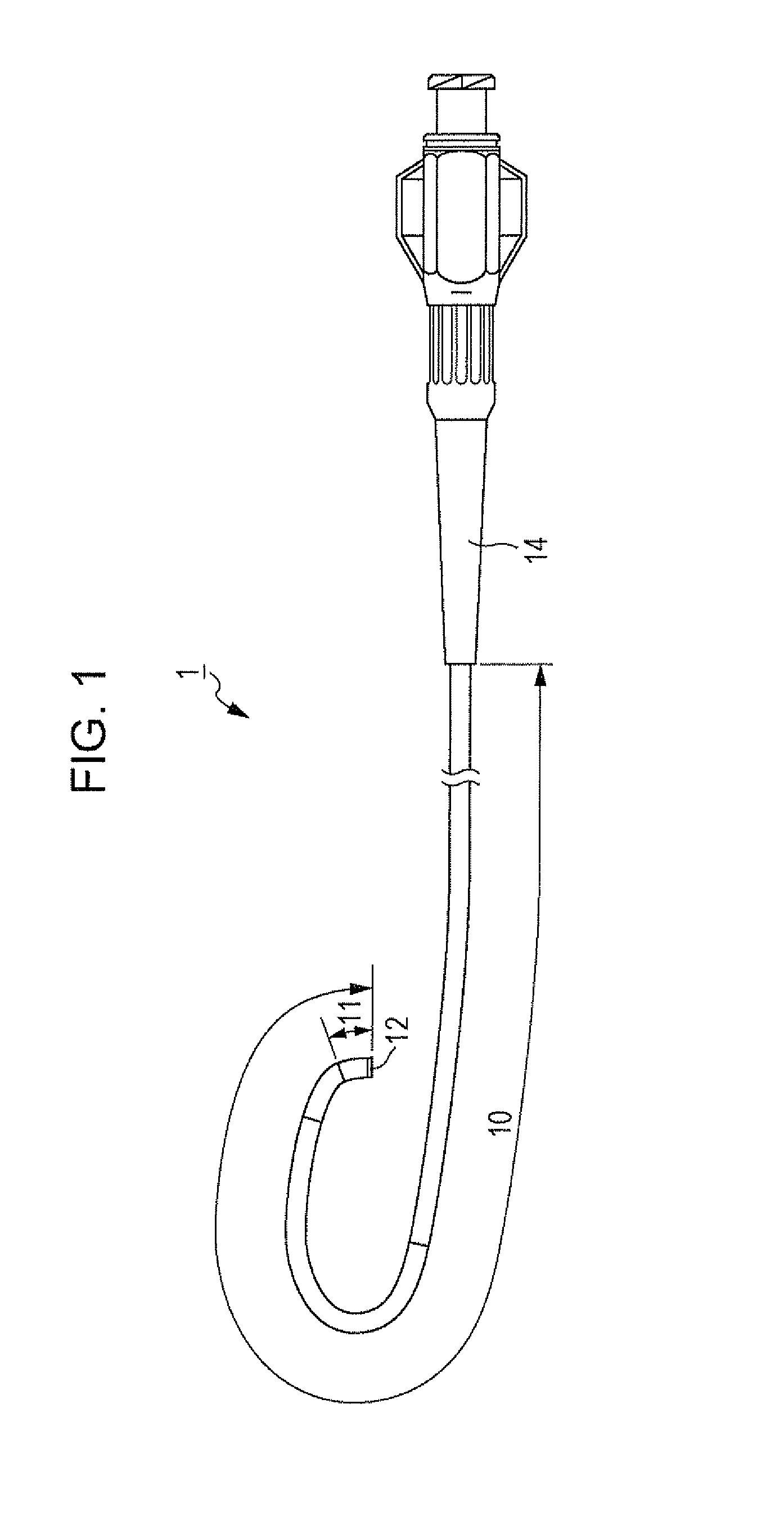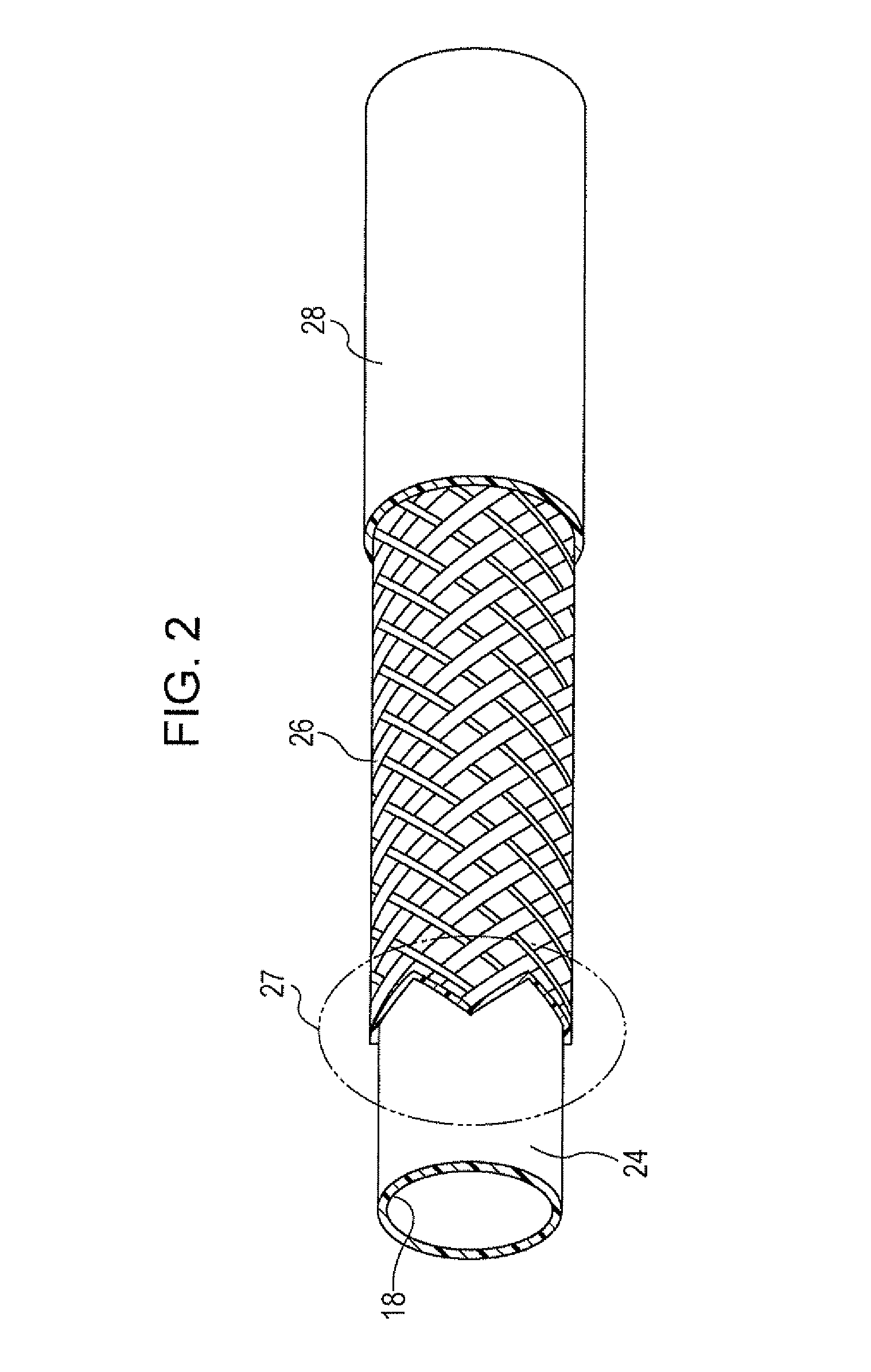Catheter
a catheter and wire technology, applied in the field of catheters, can solve the problems of reduced thickness of first wire and second wire of the braid, insufficient joint strength between and difficulty in high joint strength of the first wire and the second wire together, and achieve the effect of high joint strength
- Summary
- Abstract
- Description
- Claims
- Application Information
AI Technical Summary
Benefits of technology
Problems solved by technology
Method used
Image
Examples
Embodiment Construction
[0022]Referring to FIGS. 1 to 9B, a catheter 1 according to an embodiment will be described as an example. In FIGS. 1, 2, and 3, the left side is a distal side (far side) that is inserted into a body while the right side is a proximal side (a near side or a base side) that is manipulated by a technician such as a doctor. For ease of understanding, small components such as first wires 26a and second wires 26b of a braid 26, which are described below, are slightly exaggerated throughout the drawings relative to the dimensions of other components.
[0023]The catheter 1 illustrated in FIG. 1 is a tubular medical device having a full length of approximately 1200 mm. The catheter 1 mainly includes a catheter body 10 having flexibility, a distal tip 12 bonded to a distal end portion 11 of the catheter body 10, and a connector 14 fixed to a proximal portion of the catheter body 10.
[0024]As illustrated in FIGS. 2 and 3, the catheter body 10 includes an inner layer 24, a braid 26 serving as a r...
PUM
| Property | Measurement | Unit |
|---|---|---|
| length | aaaaa | aaaaa |
| thickness | aaaaa | aaaaa |
| width | aaaaa | aaaaa |
Abstract
Description
Claims
Application Information
 Login to View More
Login to View More - R&D
- Intellectual Property
- Life Sciences
- Materials
- Tech Scout
- Unparalleled Data Quality
- Higher Quality Content
- 60% Fewer Hallucinations
Browse by: Latest US Patents, China's latest patents, Technical Efficacy Thesaurus, Application Domain, Technology Topic, Popular Technical Reports.
© 2025 PatSnap. All rights reserved.Legal|Privacy policy|Modern Slavery Act Transparency Statement|Sitemap|About US| Contact US: help@patsnap.com



